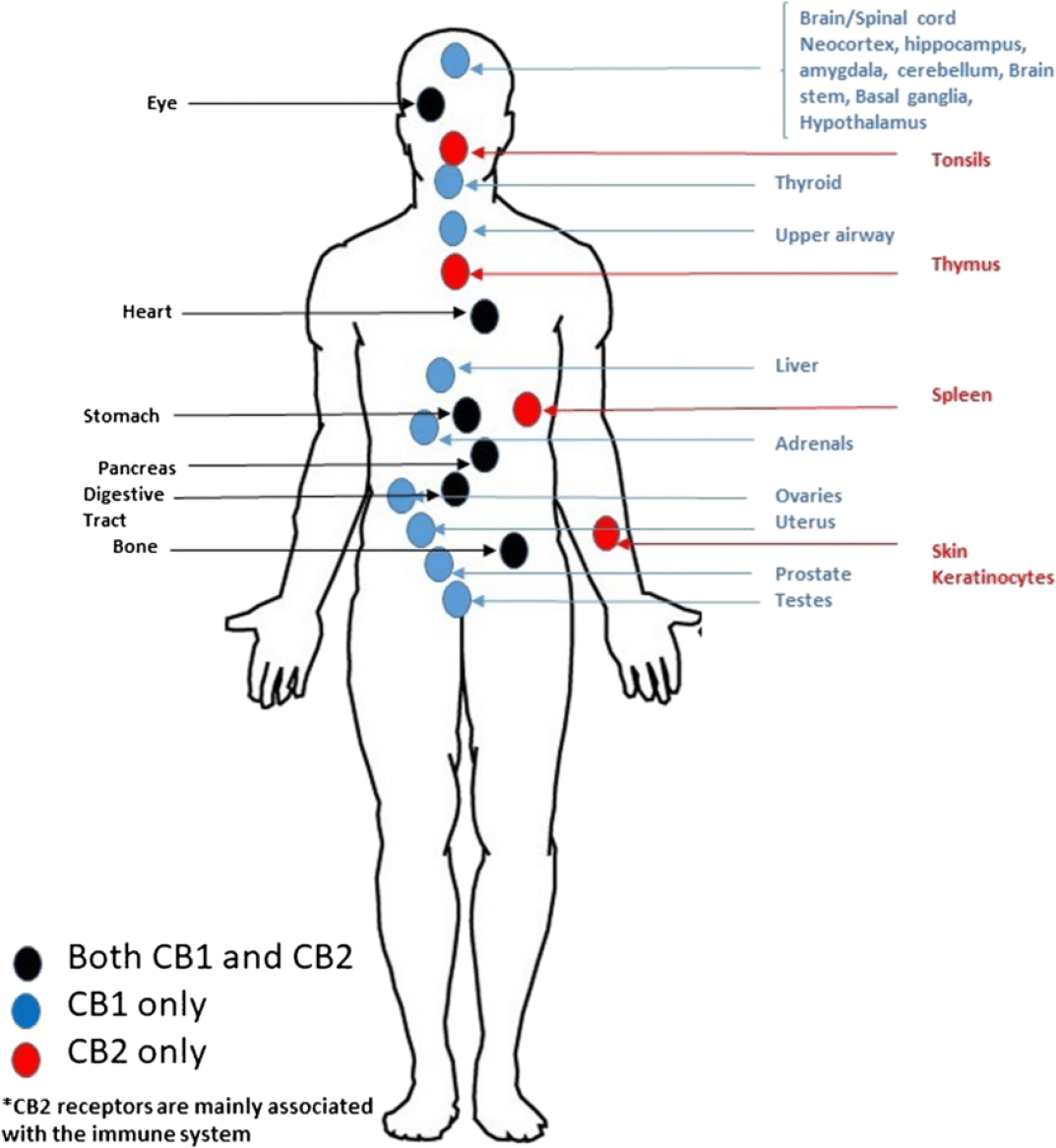
ANJA Presents: How Does Cannabis "Work"?
Ashley Robins
August 15, 2022
It’s no secret that cannabis has a psychological and physiological effects on its users. Some users may feel relaxed after using cannabis, while others may feel even more anxious than before. The main question is: How does cannabis work, and why do people feel different effects after using the same strain?
The Endocannabinoid System
In order to understand how cannabis works, we must first talk about the endocannabinoid system- otherwise known as the ECS. The endocannabinoid system is naturally found in almost every organism- with the exception of insects. It has evolved over the course of 600 million years and is critical to homeostasis- the management of balance and moderation within your body. The ECS functions as a switchboard of sorts, functioning across different receptors around the body to act and react to stimuli.
The ECS functions using four main components:
The Cannabinoid Receptors (CB1 and CB2)
The Ligands (the things that bind to these receptors)
The synthesizing enzymes that create the cannabinoids
The degradative enzymes that break down the cannabinoids
The CB1 receptors are found throughout the body; including but not limited to the basal ganglia and the cerebellum area of the brain- potentially affecting movement for a temporary period of time. This is why some people feel "glued to their couch," and why we highly advise against driving after consuming cannabis.

It’s important to note that the ECS is responsible for moderating the cannabinoids that enter, meaning that the effects of cannabis are temporary and will not cause chronic dopamine deficiency, unlike other alternatives that are not cannabinoid-based. A regular cannabis user will grow a higher tolerance and may need more THC to feel the same “high”, but this can be mitigated by stepping back from cannabis use for a bit, allowing the body to adjust to a new equilibrium. Cannabis does not stop the body from naturally producing dopamine and other necessary chemicals. That being said, moderation is key to responsible cannabis usage, just like any other good.
Why is this important?
The ECS is responsible not only for synthesizing and utilizing natural cannabinoids, but also for breaking down external cannabinoids- which are found in the cannabis plant as well. In fact, the naturally produced cannabinoid anandamide (AKA the bliss molecule that is responsible for the post-exercise feeling of “runners high” (not endorphins!))- is a chemical copy of THC- the naturally produced phytocannabinoid found in the cannabis plant. The same positive feelings that come from intensive exercise can also be replicated using the cannabis plant!
Now that we understand what the system for processing cannabinoids is, let's talk about the cannabinoids themselves.
The Cannabinoids
As previously mentioned, cannabinoids are natural compounds found in the cannabis plant and in the human body.
The main signaling molecules in the system are called endocannabinoids, which bind to two of the body's natural receivers: the CB1 and the CB2 receptor. when THC binds to CB1 receptors, it releases a neurotransmitter called dopamine, which is responsible for pleasant and positive mood responses. A common comparison used for these receptors is the classic “lock and key” example; the cannabinoid is a key that “unlocks” the CB1 and CB2 receptors, allowing for cannabinoids to enter via the ligands and be synthesized and broken down by the body’s natural enzymes.
the two main cannabinoids are tetrahydrocannabinol (THC) and Cannabidiol (CBD).
THC is responsible for the “high” feeling, while CBD does not share the same psychoactive effects. Once in your body, THC interacts with your ECS by binding to receptors, just like naturally produced endocannabinoids would. It’s powerful partly because it can bind to both CB1 and CB2 receptors. When THC binds to CB1 receptors, it releases a neurotransmitter called dopamine, which is responsible for pleasant and positive mood responses. As far as we know, the psychoactive effects of cannabis are primarily linked to the CB1 receptor.
Unlike THC, CBD does not cause mental effects and generally has no noticeable side effects, asides from slight lethargy if consumed in excess. Experts aren’t entirely sure how CBD interacts with the ECS, but they do know that it doesn’t bind to CB1 or CB2 receptors the way THC does. Instead, many believe it works by preventing endocannabinoids from being broken down. This allows them to have more of an effect on your body. Others believe that CBD binds to a receptor that hasn’t been discovered yet. While the details of how it works are still under debate, research suggests that CBD can help with pain, nausea, and other symptoms associated with multiple conditions.
The science of cannabis is fascinating and is still being explored. Years of prohibition have significantly slowed scientific progress and research on the subject, but ANJA strongly advocates for more research and understanding of the magic of this plant. There is so much potential for good, and we are proud to be advocates and leaders in the cannabis industry.
When you have questions, we have ANJA.